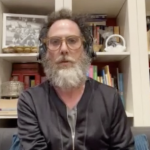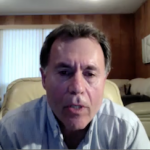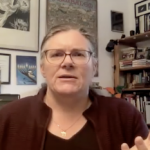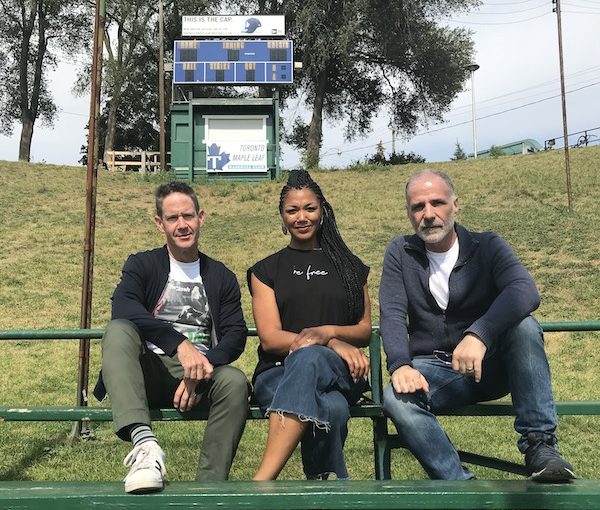בנק ההשקעות השוויצי יו.בי.אס פרסם לאחרונה את המדד השנתי שלו של בועות הנדל”ן בעולם. על פי המדד על רשימת עשר הערים המסוכנות ביותר מבחינת בועדת הנד”לן נמנות טורונטו וונקובר מקנדה, וכן תל אביב מישראל.על פי המדד של בועודת הנדל”ן של היו.בי.אס מחירי הדיור בעיר כמעט שילשו את עצמם בין השנים אלפיים ואחת לאלפיים ושבעה עשרה. שכר הדירה שמר על קצב עלייה לצד הגידול במחירי הרכישה, דבר ששיקף מחסור גדול בנכסים לדיור. לדברי עורכי המחקר, אחרי תקופת תיקון קצרה באלפיים ושמונה עשרה, חזר השוק לשלב נפיץ נוסף של קפיצת מחירים. בבנק יו.בי.אס מעריכים כי מחירי הנדל”ן למגורים בעשרים וחמש ערים מרכזיות בעולם, במסגרת הכנת הדין וחשבון, ממחצית שנה שעברה עד מחצית השנה הנוכחית, הואץ קצב הצמחיה הממוצע במחירי הדיור הנומינליים באותן ערים, עד כעשרה אחוזים. מדובר בשיעור הצמיחה הגבוה ביותר מאז שנת אלפיים ושבע
במדד בועות הנדל”ן, הערים טורונטו שבקנדה – ראשונה ופרנקפורט שבגרמניה – שנייה ממשיכות להציג, כמו אשתקד, את רמות הסיכון הגבוהות ביותר בין שוקי הדיור העולמיים. סיכונים לבועה מוגברים נרשמים גם בציריך בשווייץ – שלישית, מינכן בגרמניה – רביעית, הונג קונג בסין – חמישית, ונקובר בקנדה – שישית, אמסטרדם בהולנד – שביעית תל אביב בישראל – שמינית וטוקיו ביפן – תשיעית. למעשה, כל הערים שנבדקו, מלבד שתיים: פריז בצרפת ושטוקהולם בשבבדיה, חוו עלייה משמעותית במחירי הדיור
עורכי המחקר מסבירים כי כתוצאה משערי הריבית הנמוכים, התרחקו מחירי הדיור בעשור האחרון בהתמדה מרמות ההכנסה ומשכר הדירה. הערים השוכנות כרגע בטריטוריית סיכון לבועה חוו בתקופה זו עליות מחירים ממוצעות של כשישים אחוז במונחים מותאמים של הינפלציה, בעוד שההכנסה ושכר הדירה הריאליים גדלו רק בכשניים עשר אחוז נכתב. כעת .יש התחלה של נקודת מפנה בעקבות עליית שערי הריבית, אבל חוסר האיזון בשוקי הדיור העירוניים הגלובליים עדיין גבוה מאוד, שכן בלא מעט ערים המחירים אינם מסונכרנים עם שערי הריבית ההולכים וגדלים בעת הזו
עורכי המחקר מעריכים עוד כי ההאצה בצמיחת המשכנתאות שטרם נפרעו הייתה בולטת כמעט בכל הערים. לדבריהם זו גם השנה השנייה ברציפות שבה החוב הביתי גדל מהר יותר במידה ניכרת מאשר הממוצע לטווח ארוך. בנוסף, שיעורי הריבית למשכנתאות כמעט הכפילו את עצמם בממוצע בכל הערים שנבחנו, מאז נקודת השפל שלהם באמצע אלפיים עשרים ואחת. בשילוב עם מחירי נדל”ן הגבוהים, בנק יו.בי.אס מודים כי האפשרות לרכישת דירה על ידי שכיר בעל הכשרה גבוהה הוא נמוך בממוצע בשליש לעומת המצב לפני מגפת הקורונה שפקדה אותנו לפני למעלה משנתיים
לדברי קלאודיו סאפוטלי, מנהל תחום הנדל”ן במשרד מנהל ההשקעות הראשי ביו.בי.אס, האינפלציה וההפסדים על נכסים, הנובעים מהסערה הנוכחית בשווקים הפיננסיים, מפחיתים את כוח הרכישה של משקי הבית, דבר שמרסן את הביקוש למרחב מחיה נוסף. הכוונה לרכישת דירה נוספת מעבר לזו הקיימת. אי לכך, ענף הדיור הופך כעת לפחות אטרקטיבי כהשקעה כי עלויות ההלוואה בערים רבות עולות על התשואה של השקעות של קנייה לצורך השכרה
לדברי עורכי המחקר, דירוגי המדד לא גדלו בממוצע בהשוואה לשנה שעברה. בנוסף, הכנסות גבוהות וצמיחה של שוק ההשכרה בלמו גידול אפשרי נוסף בחוסר האיזון. מחירי הדיור באיזורים הכפריים צמחו מהר יותר מאשר בערים, זו השנה השנייה ברציפות. בנוסף, צמיחת המחירים הואטה במידה ניכרת במונחים מותאמים של האינפלציה. אך הערכות המחיר הנוכחיות הן גבוהות ביותר. בכל מקרה מציינים במחקר שהשגשוג הגלובלי בתחום הדיור מגיע כעת לסופו
מהמחקר עולה עוד כי בארה”ב, חמש הערים שנבחנו נמצאות בטריטוריית הערכת-היתר, וחוסר איזון נראה במיאמי ובלוס אנג’לס יותר מאשר בסן פרנסיסקו, בבוסטון ובניו יורק. שוקי הדיור בשטוקהולם, פריז וסידני שבאוסטרליה נותרו בהערכת-יתר למרות מגמות צינון מסוימות. שוקי דיור אחרים המפגינ סימני הערכת-יתר כוללים את ז’נבה, לונדון, מדריד סינגפור. סאו פאולו, שנוספה השנה למדד, זוכה להערכה הוגנת, לצד ורשה ומילאנו
בדיקתה לעומק של הנתונים מגלה כי למרות השנה החזקה שעברה על שוק הדיור של דובאי, גם היא שוכנת כעת בטריטוריית ההערכה ההוגנת. לדברי עורכי המחקר, שוק הדיור של דובאי היה רכבת שדים בשני העשורים אחרונים, ככל שהביקוש התאים את עצמו במידה רבה להתפתחות מחירי הנפט. מחירי הנפט המשתנים תדיר, והגידול בכמות ההגירה, הפיחו חיים בשוק בשנה האחרונה. מחירי הדיור צמחו בעשרה אחוזים בין אמצע אלפיים עשרים ואחת לאמצע אלפיים עשרים ושתיים. שכר הדירה בארבעת הרבעונים האחרונים עלה על הצמיחה במחירי הדיור. לפיכך ממשיך השוק ליהנות מהערכה הוגנת
בשווייץ, הביקוש החזק המתמשך להשקעות בסביבה עם שיעור ריבית שלילי היה המנוע העיקרי של מגמת המחירים. מחירי הדיור באיזור עלו בכעשרים אחוז מאז תחילת המגפה. בסך הכול, היחס בין מחירי הרכישה לבין מחירי שכר הדירה יצא מאיזון, והשוק הפך לאיזור סיכון-לבועה. לדברי עורכי המחקר, מחירי הרכישה הגבוהים יחוו בקרוב בוחן מציאות, שמקורו בזינוק שיעורי הריבית של בנק סוויס השוויצרי. אך הודות להמשך צמיחת האוכלוסייה החזקה באיזור הכלכלי של ציריך, ייתכן שתתבצע התאמת מחירים לאורך זמן
פרנקפורט ומינכן בגרמניה מציגות את הסיכונים הגבוהים ביותר של בועת הנדל”ן בקרב שוקי איזור האירו. שתי הערים הגרמניות חוו בעשור האחרון כמעט הכפלה של מחירי הנכסים מבחינה נומינלית, למרות שהצמיחה הנוכחית הצטננה לכדי כחמישה אחוזים בין אמצע אלפיים עשרים ואחת לבין אמצע אלפיים עשרים ושתיים מהרמות הדו-ספרתיות הקודמות שלהן. השילוב של עלויות מימון גדלות ושל סיכויי צמיחה כלכלית נמוכים בשנה שעברה אמור להוציא אוויר ממנוע השפע ששרר בשוק, למרות שיעורי הנכסים הריקים הנמוך מאוד מבחינה היסטורית
הממצאים מראים כי שוק הדיור של אמסטרדם בהולנד הציג צמיחת מחירים חזקה ביותר בשוקי איזור האירו, עם שיעור של כשבעה עשר אחוז בערכים נומינליים, והעיר נמצאת כיום בטריטוריית הסיכון לבועה. במדריד, צמיחת המחירים הואצה גם כן מאז תחילת המגפה. עיר הבירה הספרדית נמצאת כעת בטריטוריית הערכת-היתר, למרות שבממוצע עובד בעל הכשרה במגזר השירותים יכול עדיין להרשות לעצמו את מרחב המחיה הגדול ביותר בקרב שוקי איזור האירו שנכללו במחקר
לצד ההתאוששות הכלכלית ושיעורי הריבית הנמוכים יותר לאחר המגפה, תמריצים לשיפוץ בניינים תמכו בעליית מחירים במילאנו באיטליה לאחר עשור של מחירי סטגנציה. מהצד השני, תחום הדיור בפריז משתרך מאחורי שוקי הדיור של איזור האירו. מחירי הנכסים הנומינליים סבלו מסטגנציה בין אמצע אלפיים עשרים ואחת לאלפיים עשרים ושתיים, ועקב כך נטשה פריז שבצרפת את טריטוריית הסיכון לבועה. אך פריז ממשיכה להיות שוק איזור האירו הכי פחות נגיש מבחינת מחירים במחקר
שוק הדיור בלונדון בבריטניה נמצא בטריטוריית הערכת-יתר. המחירים גבוהים בכשישה אחוזים מהשנה שעברה, כשהם נתמכים על ידי מחסור נכסי דיור מול הביקוש המוגבר שלאחר המגפה. שכר הדירה שם משתנה בחדות, כאשר קונים נתקלים בקשיים במציאת נכסים מתאימים. עם זאת, שיעורי המשכנתאות הגדלים, סיום חופשת מס הבולים בבריטניה והצפי הכלכלי הלא ברור מחלישים את הצפי בנוגע למחירים
לדברי עורכי המחקר, ורשה בפולין נהנתה מהיותה אחד משוקי העבודה החזקים במזרח אירופה, והחוזק הזה משך לשם אזרחים חדשים ומשקיעים מסוג רכישה לצורך השכרה. השוק ממשיך ליהנות מהערכה הוגנת, אך הדיור הפך בהדרגה לבלתי נגיש כלכלית בשל המחירים הגבוהים ושיעורי הריבית המטפסים במהירות. בניגוד לכך, למדיניות מוניטרית הדוקה יותר הייתה השפעה מיידית על שוק הדיור של שטוקהולם בשבדיה. עקב כך אירעה צניחת מחירים של יותר מעשרח אחוזים ברבעון השני השנה, שהקפיצה את דירוג המדד אל מחוץ לאיזור האירו והיישר לטריטוריית הערכת היתר
על פי המחקר, מחירי הדיור בטוקיו ביפן הלכו וצמחו כמעט ברציפות במשך למעלה משני עשורים, תוך שהם נעזרים בתנאי מימון אטרקטיביים ובצמיחת האוכלוסייה. חוסר האיזון הגיע לסף הסיכון לבועה, ככל שהזמינות של רכישת הדירות המשיכה להתדרדר. אך סימני החלשה הופיעו לאחרונה: צמיחת המחירים פחתה בחצי לכדי חמשיה אחוזים לעומת השנה המקבילה, ומשתרכת מאחורי הממוצע הכלל ארצי זו הפעם הראשונה בעשר שנים. המחירים בסידני באוסטרליה השתנו באופן קיצוני ביותר משלושים אחוז באלפפים ועשרים ואלפיים עשרים ואחת, לפני שהידוק תנאי ההלוואות בשנה שעברה והקפיצות האגרסיביות של שיעורי הריבית השנה הפחיתו את הנגישות במידה רבה. עקב כך, המחירים כבר הספיקו לרדת ביותר מחמישה חוזים במהלך הרבעון השני של השנה. השוק נותר עדיין בהערכת-יתר גבוהה
השוק של הונג קונג בסין רשם תיקון של כארבעה אחוזים במחירים הנומינליים בין אמצע שנה שעברה לאמצע שנה זו – שיעור הצמיחה החלש ביותר מכל הערים שנבחנו במחקר. למרות זאת, השוק לא עזב עדיין את טריטוריית הסיכון לבועה. סינגפור נהנית ממיצוב בינלאומי חזק כמרכז עסקים, ומחירי הדיור גדלו באחד עשר אחוז נוספים בין אמצע אשתקד לבין אמצע השנה. המחקר עולה עוד כי ערי ארה”ב חוו צמיחת מחירים חזקה הרבה יותר מאז תחילת המגפה בהשוואה לשנים הקודמות. מיאמי ממשיכה ליהנות מהגירה חזקה פנימה ומעניין רב בקרב המשקיעים. היא רשמה את שיעורי צמיחת מחירי הרכישה ושכר הדירה השנתיים החזקים ביותר, ונדחפה עקב כך עמוק יותר אל טריטוריית הערכת-היתר. גם סן פרנסיסקו רשמה גידולים מרשימים במחירים. לנוכח היחלשות גיוסי העובדים לענף ההייטק והסיכויים להמשך הקיום של מודלי העסקה מרחוק ועבודה ההיברידית, הצפי עבור מחירי הדיור בסן פרנסיסקו הוא עגום למדי
חוסר האיזון בלוס אנג’לס כבר היה גבוה, וגדל אף יותר מאז השנה שעברה, משום שנגישות רכישת הנדל”ן כבר הגיעה קרוב לשיאים של כל הזמנים. בוסטון נהנתה מצמיחת ההכנסות הגבוהה ביותר מכל הערים במחקר, זאת על גבה של כלכלה חזקה ומגוונת. חוסר האיזון נשאר ללא שינוי ניכר לעומת השנה שעברה. מצד שני, ניו יורק הפגינה את צמיחת המחירים החלשה ביותר מאז אמצע אשתקד מכל הערים האמריקאיות שנכללו במחקר. היא ממשיכה להיגרר אחרי ערים ומדינות נגישות יותר וגם ידידותיות יותר מבחינת מיסוי, עסקים ורגולציה
רמות מחירי הנדל”ן בוונקובר ובטורונטו שבקנדה שילשו את עצמן בעשרים וחמש השנים האחרונות, אולם עלייה של שלושים וחמישה אחוז בדרך לרדת. לדברי עורכי המחקר, הזינוקים בשיעורי הריבית האחרונים של בנק המרכזי של קנדה היו ככל הנראה הקש ששבר את גב הגמל ותיקון מחירים מתבצע כבר עתה
שוק הדיור של תל אביב עבר לטריטוריית סיכון לבועת נדל”ן בפעם הראשונה, לאחר שמחירי הנדל”ן בעיר זינקו בכשמונה עשרה אחוז בין מחצית אלפיים ואחת למחצית אלפיים ושתיים – השיעור הגבוה ביותר מאז אלפיים ועשר






